Backwards and forwards citation chaining
Published by Alison MooreThis blog post was contributed by David Gill, a former SFU Reference Librarian.
This blog post will be useful to those interested in advanced library research particularly people who are doing literature reviews.
In one of the library workshops I teach at SFU, I play a video called Research is a Conversation from the University of Las Vegas Libraries. The video uses a party as a metaphor for research. When we attend a party, we listen to conversation around us and add our own perspective (not barge into the party like the Kool Aid Man). For literature research, we read the research to understand the scholarly conversation of the topic, identify the gaps, and conduct our own research in the field to fill them.
One way of finding literature is searching within the library catalogue or your subject specific database. You might find that you’re overwhelmed or underwhelmed by the amount of results. But once you find one relevant research work, you're well on your way to finding even more information.
While you’re reading a relevant work on your research question, you’ll notice that the author will cite other works. Make sure to check the author's reference list because these works might be helpful for your own research and this is called backwards citation chaining. There’s also a way to find how influential the author of the relevant work is to the conversation. This is called forwards citation chaining. For the best results in forward citation chaining, the influential work should be a couple years old so there’s time for scholars to incorporate the work into their own papers. This blog will cover the tools that you can use to do both backward and forward citation chaining (sometimes referred as snowballing, pearl-growing, or reference tracking).
I will use the article below for my examples throughout this blog:
Hole, R. D., Evans, M., Berg, L. D., Bottorff, J. L., Dingwall, C., Alexis, C., Nyberg, J., Smith, M. L. (2015). Visibility and voice: Aboriginal people experience culturally safe and unsafe health care. Qualitative Health Research, 25(12), 1662–1674. https://doi.org/10.1177/1049732314566325
SFU Library Catalogue
1) Paste the article title in the library search box
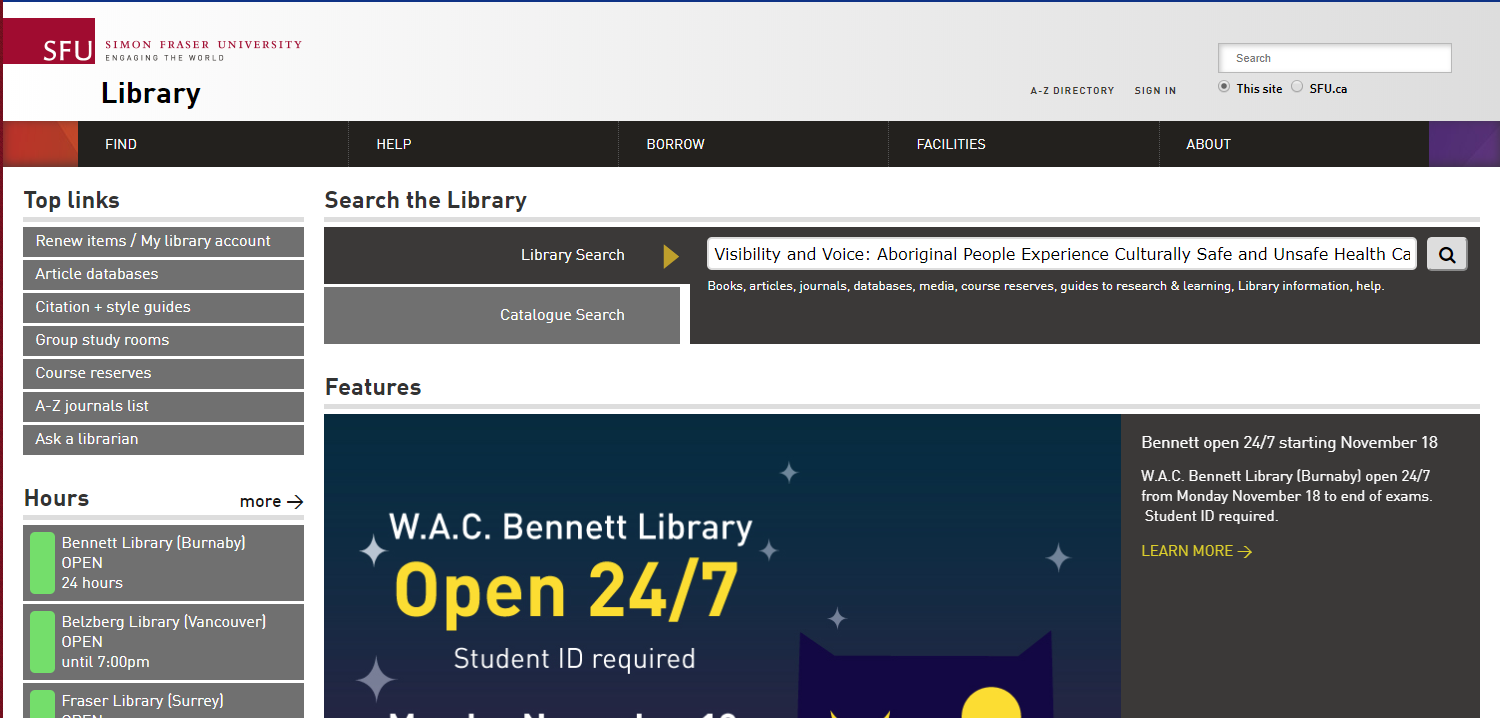
2) In the results page, find the article and click on it.
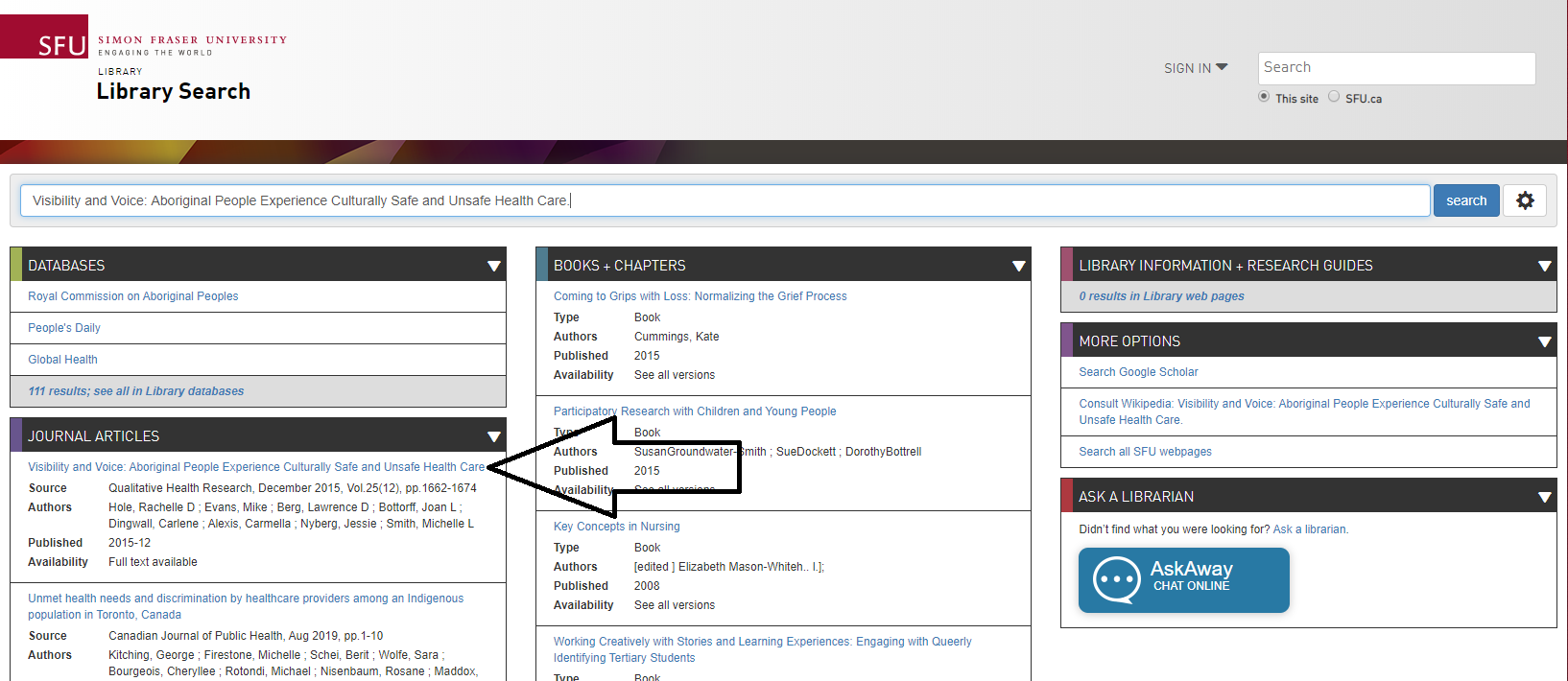
3) When you reach the article page in the catalogue, scroll down to the bottom until you get to a section called Citations.
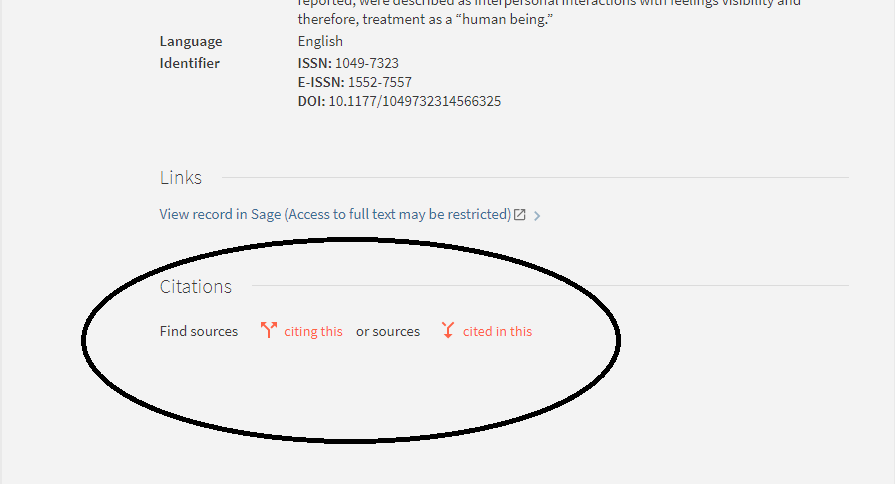
4) Backward Citation Chaining: By clicking on Cited in This, you will be able to see how many sources the author cited as well as links to them. For my article, I received 43 results.
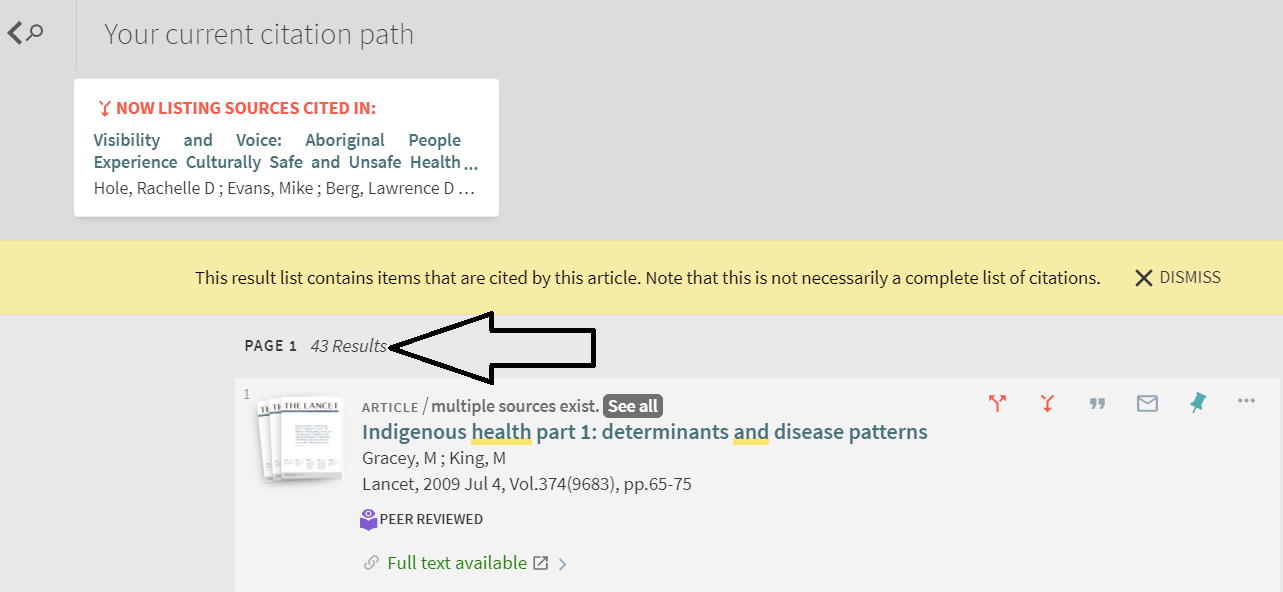
5) Forward Citation Chaining: By clicking on Citing This, you will see who cited the article. I received 7 results for my article.
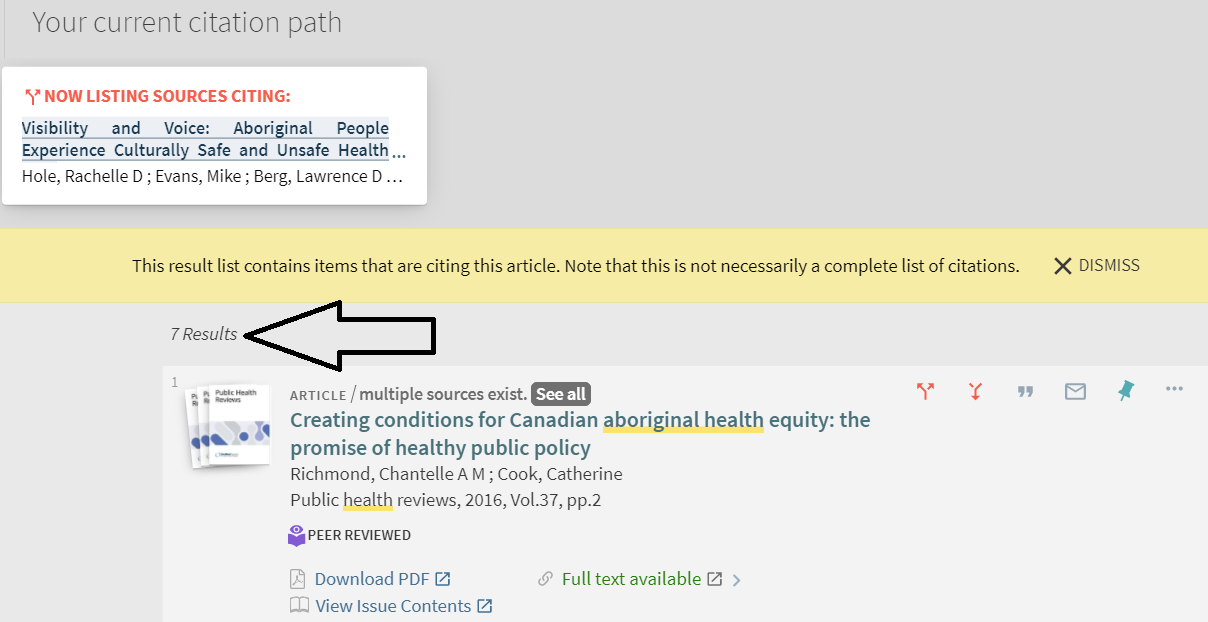
Citing This and Cited In This works best with peer reviewed articles but these options are not always available.
Web of Science
1) In Web of Science, paste the article title into the search box.
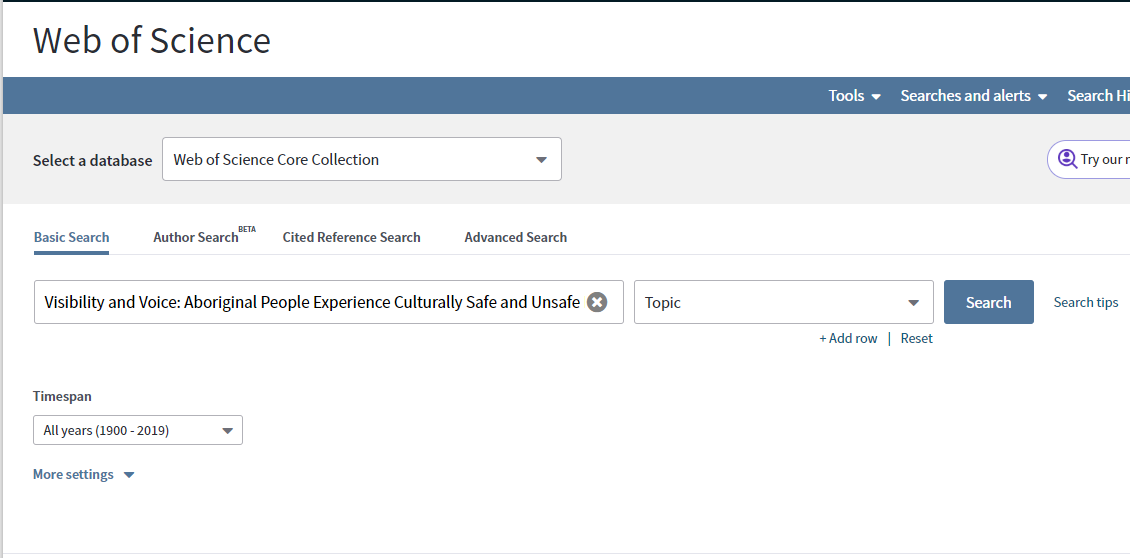
2) In the results page, click on the number beside times cited on the right hand side of the screen.
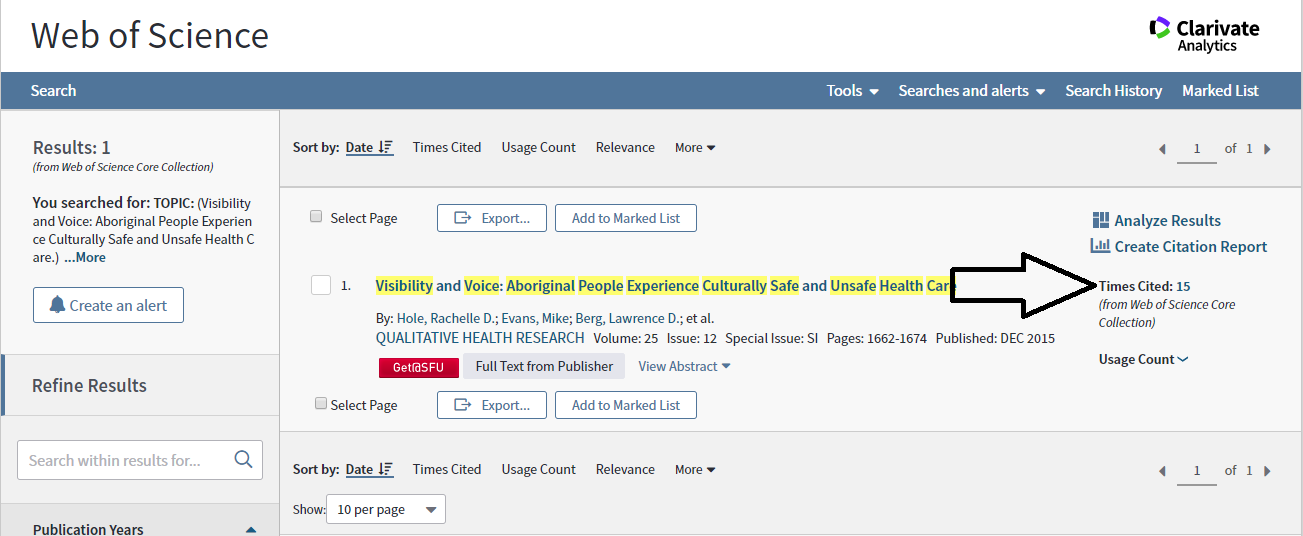
3) The results page shows the forward citation chain and there are 15 works that cited the article.
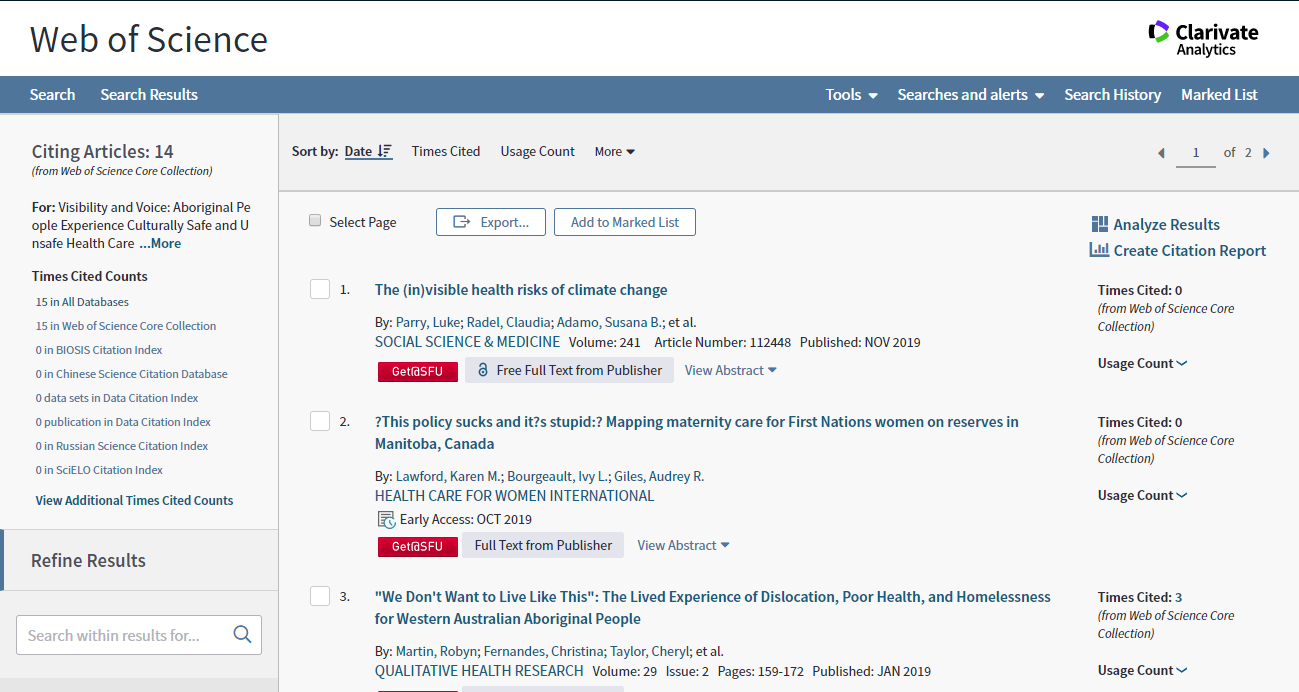
Google Scholar
1) Paste the article title in the search box
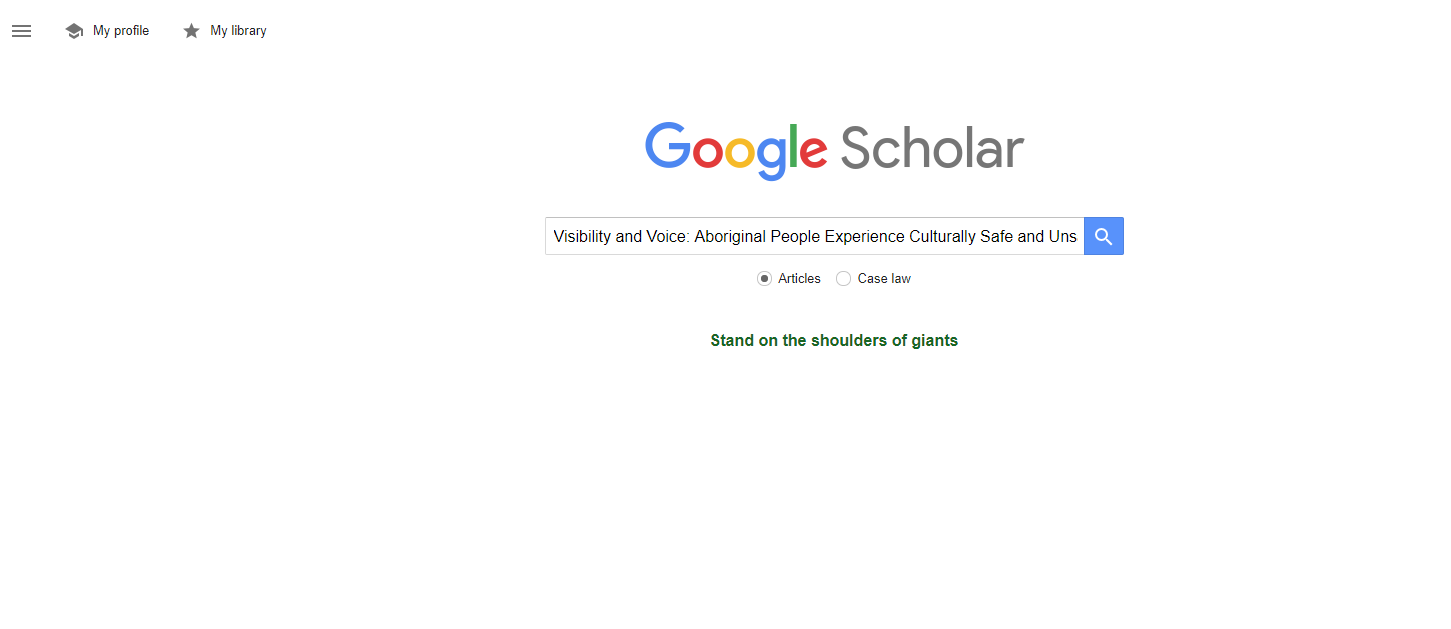
2) Click on the Cited by link underneath the article’s abstract.

3) This results page shows the forward citation chain for the article and there are 36 results.

Differences between databases for Forward Citation Chaining
Each database indexes information from difference places. Let’s discuss the results from Google Scholar.
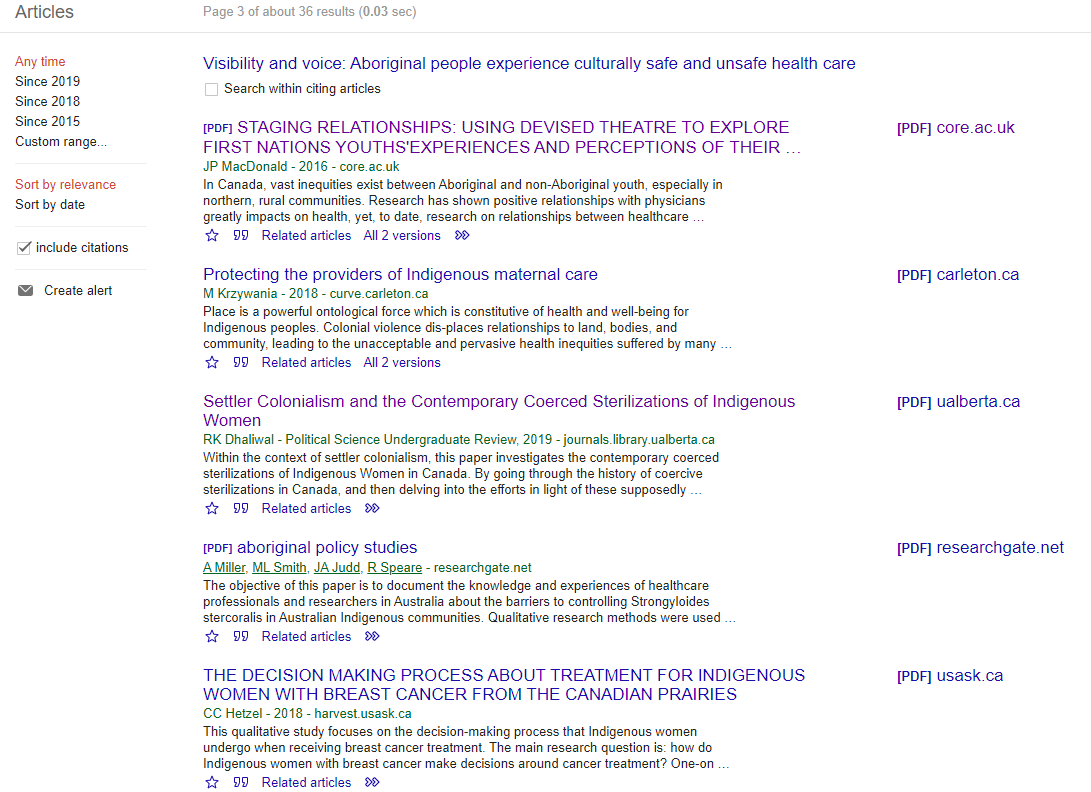
In the results, there are three graduate works from different institutional repositories (SFU’s institutional repository is called Summit). Unfortunately, the other databases haven’t indexed these works in their forward citation chain. There is also an undergraduate paper and a ResearchGate article in the Google Scholar result. After checking, I was able to confirm that the ResearchGate paper was the published version of the work. However, some journals might restrict authors from uploading this version onto the web and it could have been the pre-print version (ie. non-peer reviewed version) of the article. It is important to make sure you know what type of sources that you're permitted to use.
Useful links
Literature Reviews for Graduate Students - a guide on how to research and write literature and systematic reviews
Citation Management Software Guide - Citing your sources can take along time! Learn how to cite your sources fasters through Zotero or Mendeley
--Post by David Gill.


